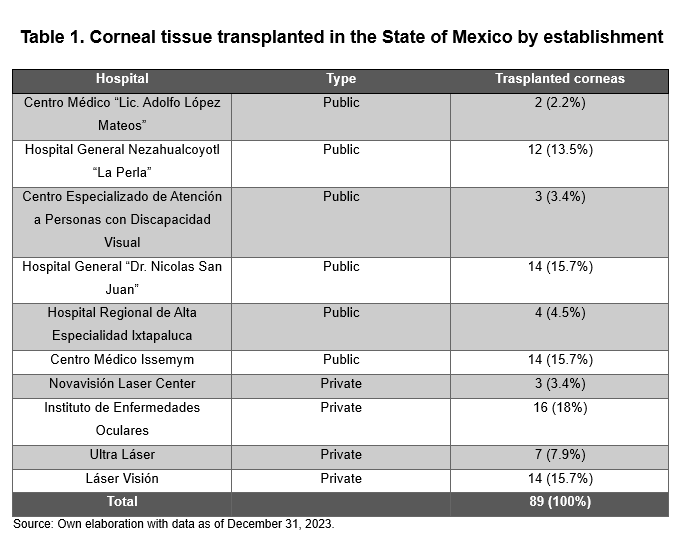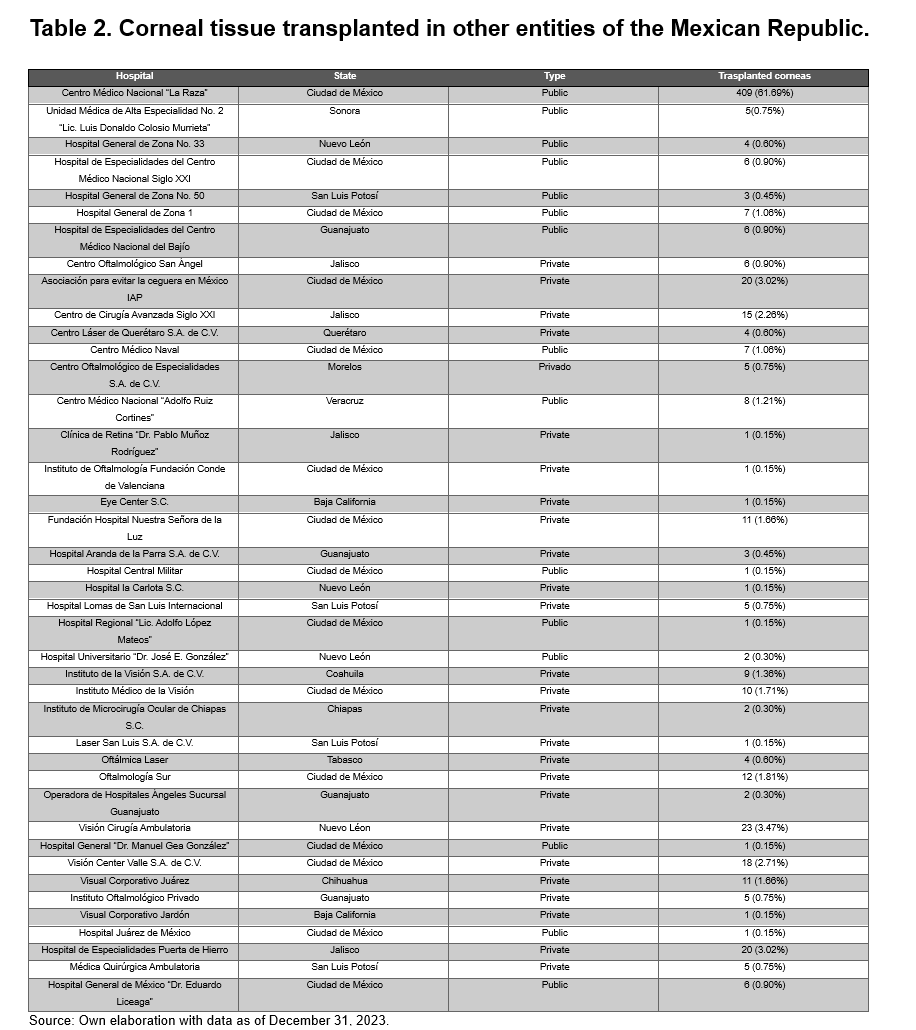Tissue bank of the state of Mexico and its impact on the National Cornea Transplant Program
Dalia Velazquez1, Ingrid Perez2, Gildardo Cortes3.
1Subdireccion de Investigacion y Enseñanza, Banco de Tejidos del Estado de Mexico, Toluca, , Mexico; 2Direccion General, Banco de Tejidos del Estado de Mexico, Toluca, , Mexico; 3Direccion General, Centro Estatal de Trasplantes del Estado de Mexico, Toluca, , Mexico
Introduction: The Tissue Bank of the State of Mexico (BTEM) is a decentralized public organization that was created with the objective of strengthening the transplant system through the procurement, processing and distribution of tissues to state or federal hospitals (1) . With the aim of preserving corneas for longer and increasing the chances of success of corneal transplantation, in the 1970s the foundations of Tissue Banks were laid (2) Worldwide, corneal transplantation is one of the most in-demand. However, the number of corneal transplants depends directly on the amount of tissue donations (3). The State of Mexico is characterized by being a national leader in donations made; in 2023, 458 donors were registered. The Tissue Bank of the State of Mexico captures, processes and distributes the tissues obtained in the entity's hospital network.
Method: The databases of the BTEM were reviewed from January 1 to December 31, 2023, to establish the number and percentage of corneas that were supplied to institutions in the State of Mexico, but also to the rest of the Republic.
Results: During the year 2023, the BTEM managed to capture 956 (100%) corneas, of which 89 (9.3%) were transplanted in hospitals within the entity. The number of corneas that were sent to other states was 663 (69.3%), on the other hand, it was found that 136 (14.2%) corneas did not meet the standards to be considered transplantable and were sent to R.P.B.I., while 68 (7.2% ) were kept in stock as available for bidding. Regarding the corneas that were transplanted in the State of Mexico, Table 1 shows the number of transplants per establishment. As for public hospitals, the General Hospital “Dr. Nicolas San Juan” transplanted the largest number (15.7%) of the corneas processed by the BTEM.

The corneal tissue transplanted outside the State of Mexico and by hospital can be viewed in Table 2. The establishment that benefited the most from the corneas supplied by the BTEM was the “La Raza” National Medical Center (61.69%), a public establishment that serves patients referred from all states of the country. It can be noted in Table 2 that the corneal tissues from the BTEM are transplanted in different entities of the country such as: Mexico City, Chihuahua, San Luis Potosí, Jalisco, Veracruz, Sonora, Nuevo León, among others.

Conclusion: The Tissue Bank of the State of Mexico is a unique institution of its kind, which processes and distributes corneal tissue for the benefit of the local population, but also supplies tissue nationally. This benefits the population of the entire Mexican Republic and the principles of accessibility, equity and charity are guaranteed. Both public and private hospitals are considered in offers of corneal tissue for transplant purposes, therefore, it can be assured that the Tissue Bank of the State of Mexico is a pillar in Mexico for the proper functioning of the National Corneal Transplant Program.
